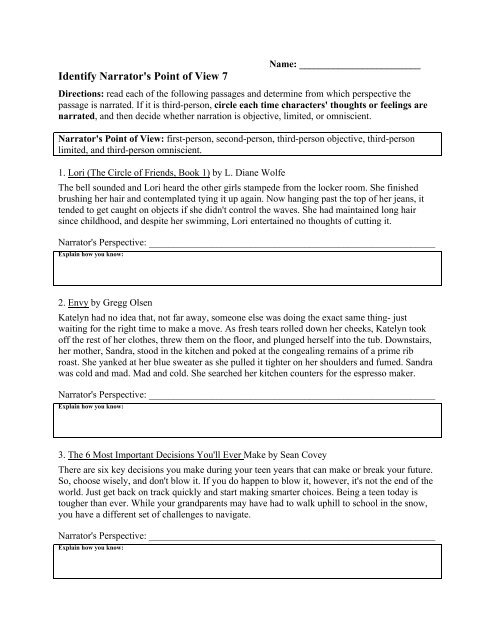
The narrator is a grown Scout, looking back on her childhood. The effortlessness of the writing owes much to the way the story is told.
Tkm narrator point of view trial#
William Faulkner diagnosed modern ills in As I Lay DyingĪs the Finches return from Robinson’s trial, Miss Maudie says: “as I waited I thought, Atticus Finch won’t win, he can’t win, but he’s the only man in these parts who can keep a jury out so long in a case like that.”ĭespite the tragedy of Robinson’s conviction, Atticus succeeds in making the townspeople consider and struggle with their prejudice.Ītticus Finch delivers his closing statement in the trial of Tom Robinson in the 1962 film.

The lessons are presented in a seemingly effortless style, all the while tackling the complexity of race issues with startling clarity and a strong sense of reality.

One might expect a book that dispatches moral lessons to be dull reading. And when Atticus agrees to defend Tom Robinson, a black man who is falsely accused of raping a white woman, they too become the target of hatred. When the book begins they are preoccupied with catching sight of the mysterious and much feared Boo Radley, who in his youth stabbed his father with a pair of scissors and who has never come out of the family house since. Throughout the novel, the children grow more aware of the community’s attitudes. They don’t eat up people’s gardens, don’t nest in corncribs, they don’t do one thing but sing their hearts out for us.” It is Miss Maudie, for example, who explains to Scout why it is a sin to kill a mockingbird: “Mockingbirds don’t do one thing but make music for us to enjoy. In this he is aided by the family’s hardworking and sensible black housekeeper Calpurnia, and their kind and generous neighbour, Miss Maudie.
Tkm narrator point of view how to#
A widower, he teaches Scout, her older brother Jem, and their imaginative friend Dill, how to live and behave honourably. Shawn Thew/AAPĪt the centre of the family and the novel stands the highly principled lawyer Atticus Finch. Then the group must correct their writing for consistent point of view, or trade papers with another group for this part.Among Lee’s accolades were her 2007 Presidential Medal of Freedom. Then the group participates in a story chain activity where each group member adds a line or two to the last line written, but has to write in the point of view they were assigned. Groups can present to the class the narrative choices they made in their proofreading process.Īnother option to reinforce this learning would be to provide each group member with a slip of paper indicating one of the narrative points of view. You can then have students work individually or in groups to correct another piece of writing on their own. Demonstrate how this process requires the proofreader to decide which point of view would be most effective and then correcting the piece to be cohesively written in that perspective.

Then students would go through the text and change all of the blacked out sections to tell a story in a different point of view.Ī great activity to help students practice proofreading their own writing with an eye for consistent point of view is to model this process with an example piece of writing that shifts point of view throughout. One site that I’ve used is .Īnother, more visual option is to provide students with a page of text from a novel (photocopied or printed from the Internet) and ask them to find all of the pronouns or proper nouns that would indicate point of view and black them out with a marker. For this activity, students can use any novel or short story around them, or you can provide them with a list of approved links to sites containing novel excerpts. Through this activity, students can assess which point of view they found more enjoyable as a reader and whether they would have made different narrative choices than the writer of the material. For example, using a piece of writing in first person, and rewriting it in third person omniscient. A great way to help students understand how writers use point of view and how narrative choices can impact a story, is to have students rewrite a portion of a piece of writing in an alternate point of view.


 0 kommentar(er)
0 kommentar(er)
